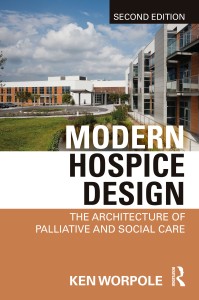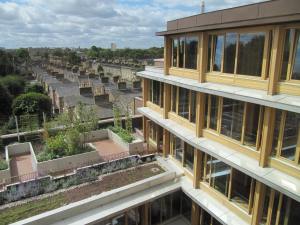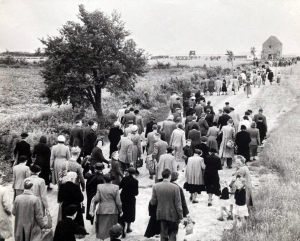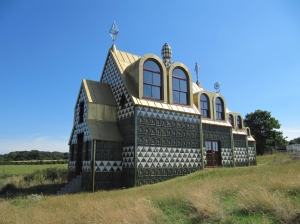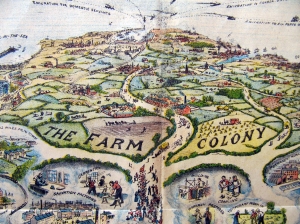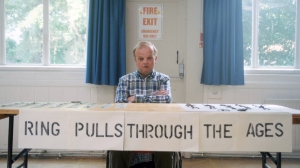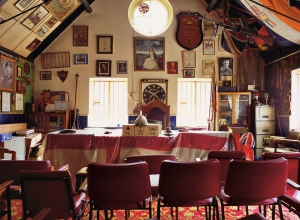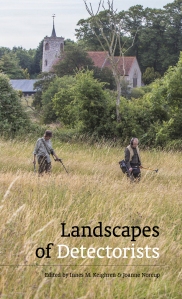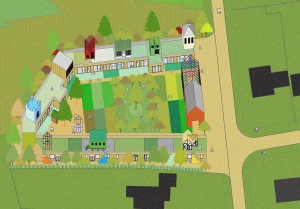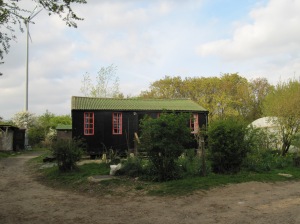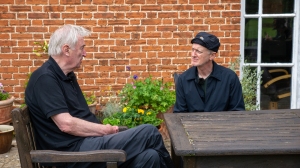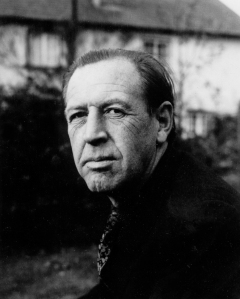The Garden of Forking Paths*
Who is Iain Sinclair, and where did he come from? That’s what people in London wanted to know in the early 1970s, east of Liverpool Street Station. His formative years were gradually disclosed in instalments on the covers and fly-leaves of small poetry collections and the bylines to essays in journals and magazines, as he began to make an impression on the little press scene and the world of low-budget film-making. He grew up in Wales, was educated at Trinity College, Dublin (soon to interview former Trinity alumnus Samuel Beckett in Paris), and was familiar with Black Mountain College and West Coast America ‘Beat’ culture (and said to be on first name terms with Ginsberg and Ferlinghetti).
For Sinclair’s eightieth birthday, writer, editor, event and film producer, Gareth Evans, has now produced this illuminating compendium of appreciations by many of the writers, artists and others associated with Iain Sinclair’s prodigious output over the past fifty years. They are the result, as Rachel Lichtenstein describes, ‘of so many fantastic collaborations and memorable events along the way, with performances in in subterranean basements, slaughterhouses, ancient crypts and under Victorian railway arches.’ This festschrift tells us much more now, though readers are advised to bear in mind that in the world of psychogeography the unreliable narrator is king, so the reader still has to add their own interpretation and read between the lines.
When I think of Iain Sinclair in the early days I also think of B.S.Johnson, another writer and film-maker making waves at the same time. One of Johnson’s short films in particular has always stayed with me: a short film about stick insects, a creature Johnson adopted as his familiar. Why so? Because, he explained in his voice-over narration, the stick insect contorts itself into such alarming postures that would-be predators tend to give it a miss. B.S.Johnson wanted to be unassimilable. So did Iain Sinclair.
However, his early psycho-geographic ruminations complicated this refusal to find a niche. There were tensions with some local historians when he started his walks and expeditions around Stepney, Whitechapel and Hackney. The prevailing tradition still foregrounded Jewish communist and anarchist topographies and mythologies, as in the work of Bill Fishman, Arnold Wesker, Simon Blumenfeld, Willy Goldman, Joe Jacobs, Alexander Baron and others. Sinclair’s early interest in Jack the Ripper, The Krays, and pub culture gangsterism, was regarded as suspect, as were forays into mysticism, ley lines, and pagan aetiologies. All this is picked up in Jenny Turner’s insightful LRB review of Sinclair’s novel, Radon’s Daughters, her essay an invaluable tour d’horizon reprinted towards the end of the collection.
Around this time a new generation of historians – often fanning out from the Spitalfields home of Raphael Samuel and his then partner Anna Davin in the early 1970s – were more interested in housing conditions, and the lives of working-class women and children. Landmark monographs were Raphael Samuel’s East End Underworld (1981), Jerry White’s Rothschild’s Buildings (1980), Anna Davin’s Growing Up Poor: Home, School and Street in London 1870 – 1914 (1996), multiple works on women’s history by Hackney-based Sheila Rowbotham, Rachel Lichtenstein’s and Iain Sinclair’s Rodinsky’s Room (1999), and Sarah Wise’s The Italian Boy (2004). All were part of an extensive network of ‘barefoot’ historians associated with the Ruskin History Workshop – indeed Samuel, Davin and Rowbotham were founder members – and their approach was admirably collegiate, and their achievements mark the high tide of post-war ‘extramural’ adult education and democratic working practices.
Out in the territory: Hackney Wick, 2023 © Ken Worpole
Sinclair’s methodology was collegiate also, but in his own way: the early essays and books were frequently based on ‘lighting out for the territory’ with an entourage of friends and fellow spirit diviners, and exhibited a distinct Ken Kesey and his Merry Pranksters vibe. Central to this new aesthetic, was the act of walking, famously advocated by the Situationists a decade before, though not to the same compelling effect, which Sinclair’s adoption, and sometimes febrile extrapolation, achieved.
Despite other recent forays into the territory, notably by the pseudonymous chronicler, The Gentle Author, on the website Spitalfields Life, it is still Sinclair who commands attention, and exerts the most influence. Gareth Evans’s editorial epilogue – together with Patrick Keiller’s affectionate tribute – both highlight the key question raised by the collection: did Iain Sinclair and his acolytes create a wholly new school of urban literary aesthetics? This festschrift is the first proper exposition suggesting that Iain’s version of psycho-geography – a form gaining much of its suggestive power from anthropological ‘thick description’ – really did create one of the most significant literary endeavours of the past 50 years. There now seems agreement – endorsed here by Robert Macfarlane and Michael Moorcock – that Sinclair’s achievement was in essaying a new literary style, part anthropological and part mischievous, which not only magicked up a world of urban entropy, but often named the guilty parties.
The influence of Sinclair’s oeuvre on so many others is proven from the testimonies of more than 180 enthusiastic contributors to IS 80. Furthermore, the book represents a persuasive case study of the ‘mycorrhizal’ or rhizome network (in Rob Thirtle’s formulation), based not on shared institutional, political or regional attachments and identities, but extending horizontally underground, without fear or favour. As digital networks expand apace to trap us all in their nets, IS 80 offers an alternative model for collaboration in the culture of dissent. The image of the writer as a hermit, isolated in a room of their own with just a wastepaper basket for company is passé. If you are not outdoors, in company, and on the qui vive, then you can’t be serious any more.
*IS 80: a festschrift for Iain Sinclair, Haggerston Hound Printworks, 2023
KW


